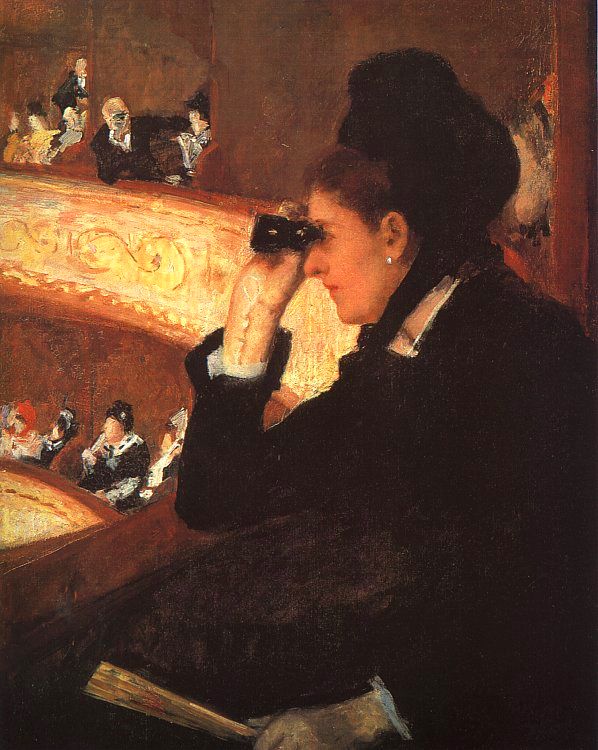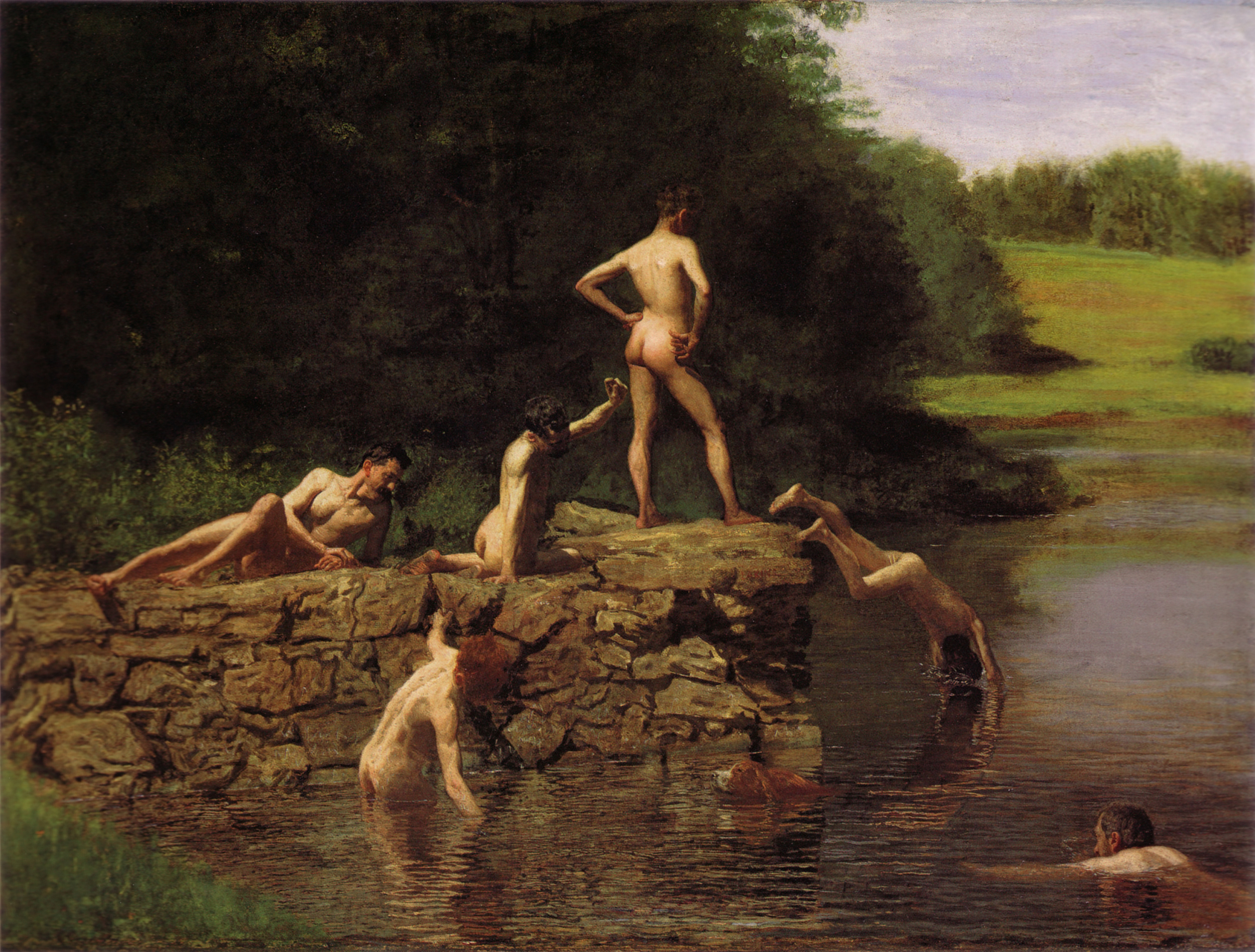
Art history flows through a series of constant actions and reactions. Following the era of Realism, Impressionism was a headstrong and perceptible riposte wrapped in hasty brushstrokes and optical effects. Henry David Thoreau wrote in his journal, “The question is not what you look at, but what you see.” While Realism focused on actual representation of ordinary social themes, Impressionism sought visual representation of what laid before them. In short: Realist painters attempted to present what they saw and Impressionist artists depicted how they saw. Although Realist painters respected the academic traditions of antiquity, they rejected the hero-complex glorification of people and events. On the other hand, Impressionists rejected much of the Classical tenets in favor of “painting for painting’s sake.”
Although Mary Cassatt was not a native Parisian Impressionist—nor of the male gender—she is upheld as one of the milestones of the Impressionist movement. Woman in Black at the Opera, a vertical-fixed oil painting by Cassatt, is most commonly discussed within feminist dialogue. In some ways, Woman in Black was one of Cassatt’s well-crafted protest songs. The spectator engages with the painting as a passive bystander. The main subject is the woman; she dons a black bonnet and black dress. Unlike the other women in the painting, even her white garments are hidden within her black attire. In doing so, she is able to mask herself in the darkness and anonymity. A few booths away, a man seems to be entranced and intrigued by her presence—for he is leaning out of his box with strained posture. Woman in Black at the Opera was painted in 1880—a time when women did not have independence or social authority over their own lives. Therefore, we can speculate that this man is either bemused or astonished by her bold company. As the woman in black watches the opera through a lens, the male and his male gaze passes unacknowledged.
 In comparison, Thomas Eakins, a fellow American Realist painter, painted homage after homage to men of different ages and class—yet the common denominator was the unquestionable power of these men. In 1885, Eakins presented The Swimming Hole. The horizontal oil painting depicts a group of young men enjoying the cool waters of the lake on a warm day. The pyramidal composition consists of dark shadows of the trees and lake water; all punctuated by the pale bodies of the young men. Eakins introduces a few concepts: man’s conquest of nature, hegemonic masculinity, and homoeroticism. The man located at the edge of the rocks stands tall with his hands planted by his hips. Although he is unaware of the spectator, he exudes dominance as he looks onto the water and trees. To his right, a man dives into the water and Eakins chose to capture the moment he breaks the water: nature cannot keep man out of its bounty. The absence of women in this painting speaks volumes—women do not have the freedom nor the virtue of achieving or innovating America's future. The Swimming Hole clearly translates the Platonic philosophy that higher thinking and immortal triumphs solely belong to men.
In comparison, Thomas Eakins, a fellow American Realist painter, painted homage after homage to men of different ages and class—yet the common denominator was the unquestionable power of these men. In 1885, Eakins presented The Swimming Hole. The horizontal oil painting depicts a group of young men enjoying the cool waters of the lake on a warm day. The pyramidal composition consists of dark shadows of the trees and lake water; all punctuated by the pale bodies of the young men. Eakins introduces a few concepts: man’s conquest of nature, hegemonic masculinity, and homoeroticism. The man located at the edge of the rocks stands tall with his hands planted by his hips. Although he is unaware of the spectator, he exudes dominance as he looks onto the water and trees. To his right, a man dives into the water and Eakins chose to capture the moment he breaks the water: nature cannot keep man out of its bounty. The absence of women in this painting speaks volumes—women do not have the freedom nor the virtue of achieving or innovating America's future. The Swimming Hole clearly translates the Platonic philosophy that higher thinking and immortal triumphs solely belong to men.
No comments:
Post a Comment